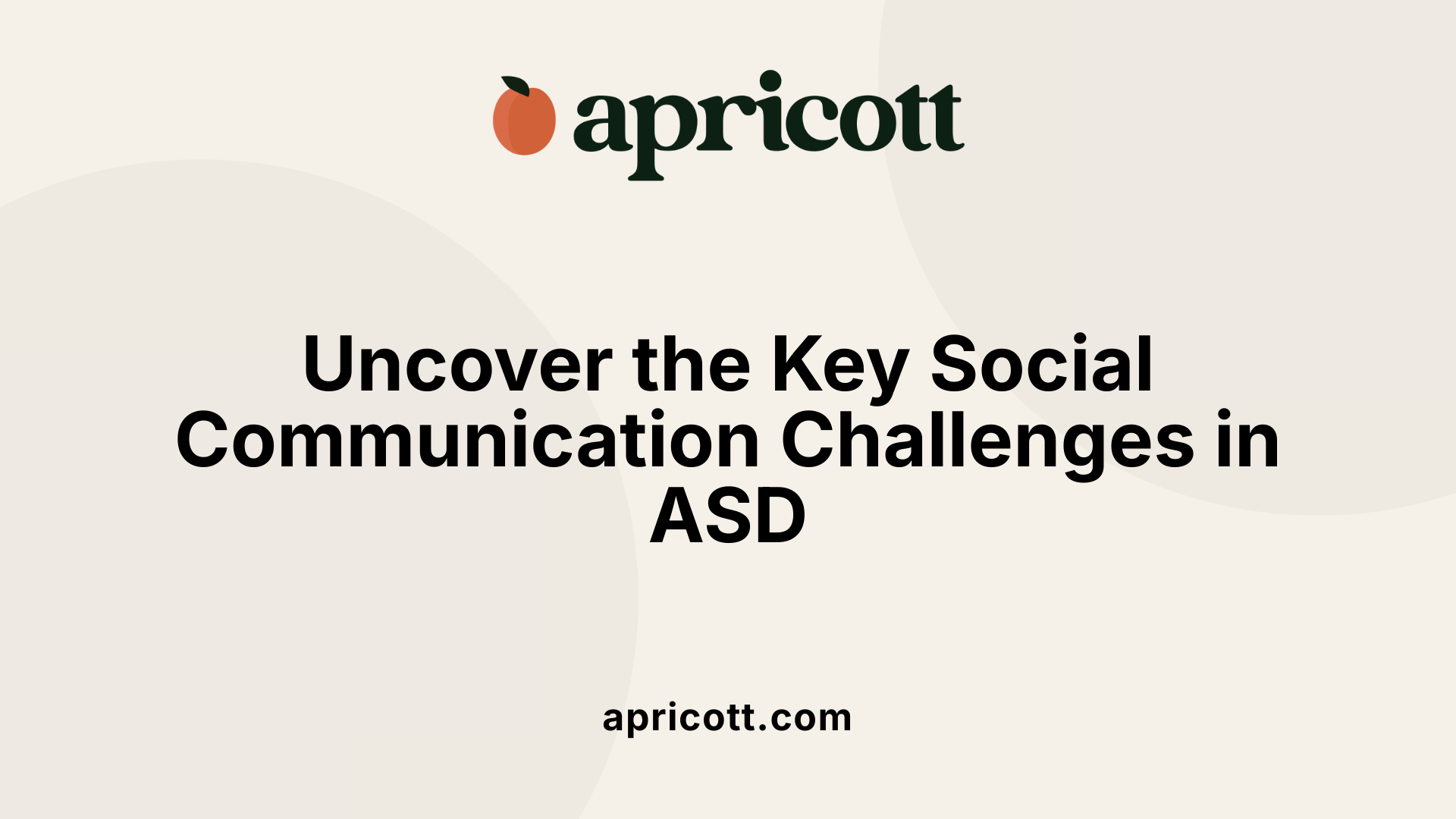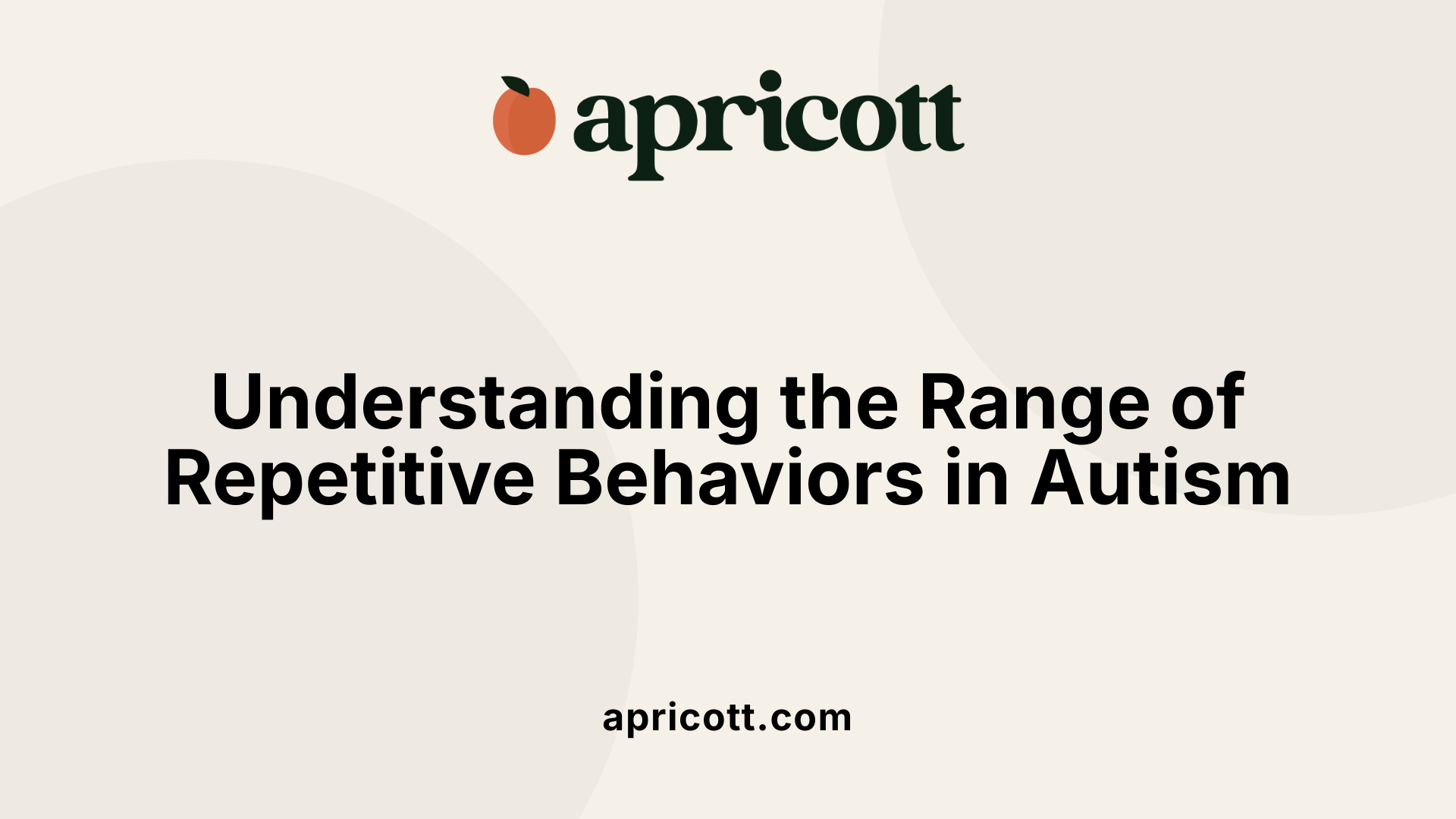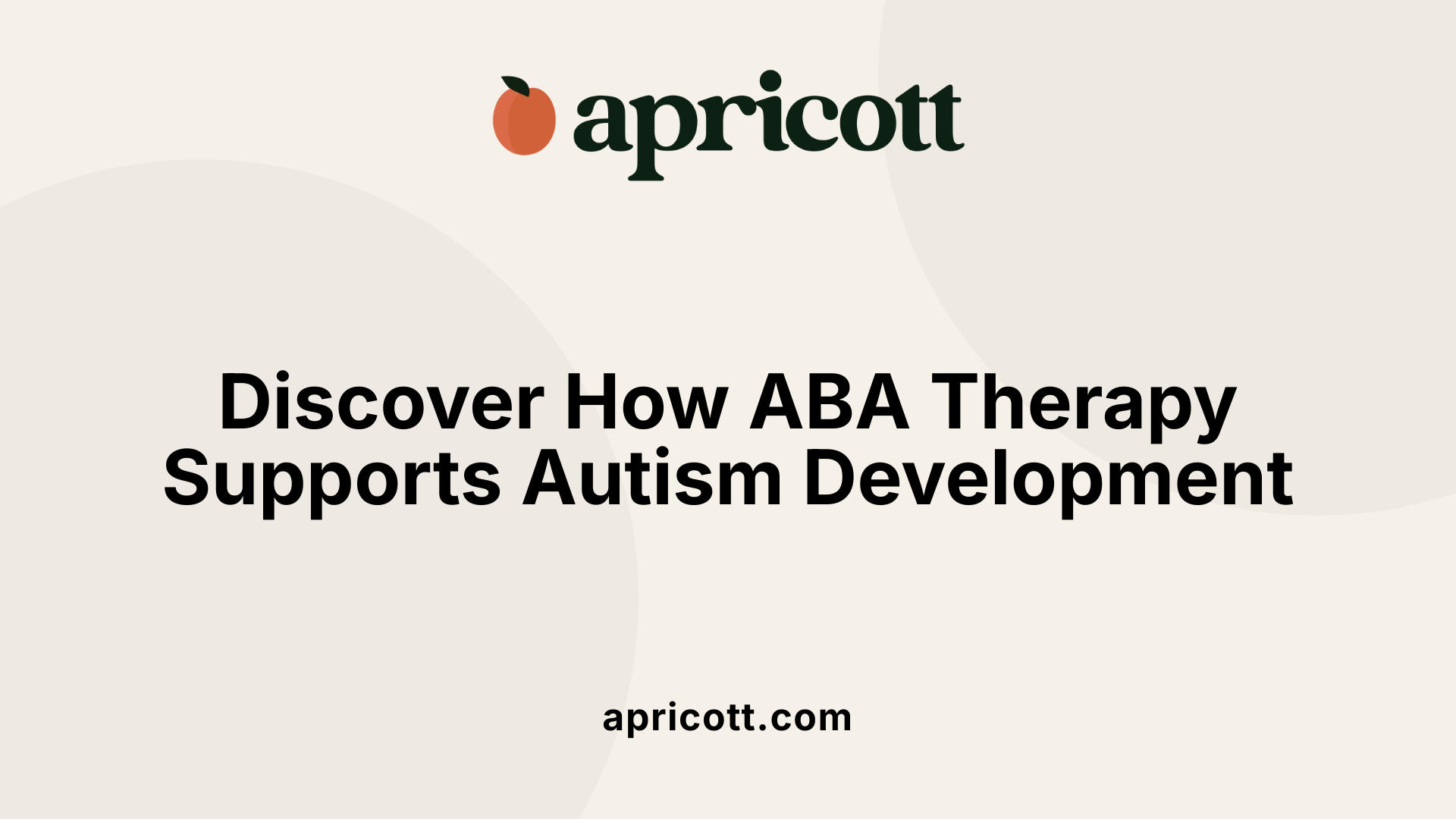December 2, 2025
Understanding Autism Spectrum Disorder Through DSM-5 Criteria and Behavioral Therapies
Autism Spectrum Disorder (ASD) is a complex neurodevelopmental condition characterized by deficits in social communication and the presence of restrictive and repetitive behaviors. The Diagnostic and Statistical Manual of Mental Disorders, Fifth Edition (DSM-5), provides the standard, evidence-based criteria for diagnosing ASD worldwide. Understanding the DSM-5 diagnostic framework and the therapeutic approaches that follow is essential for families, clinicians, and educators working with individuals on the spectrum.
The DSM-5 sets clear standards for diagnosing Autism Spectrum Disorder (ASD) based on two main domains: social communication deficits and restricted, repetitive behaviors.
ASD diagnosis requires persistent challenges in social communication and interaction across various settings. These manifest as deficits in social-emotional reciprocity, difficulties in nonverbal communication like eye contact and gestures, and trouble developing, maintaining, and understanding relationships.
Individuals with ASD may struggle with back-and-forth conversations, initiating interactions, or interpreting social cues. Nonverbal communication issues include atypical eye contact and trouble syncing verbal and nonverbal signals.
Diagnosis also requires at least two of the following behaviors:
Symptoms must be evident in the early developmental period, though they might only fully emerge when social demands exceed abilities. These behaviors must cause significant impairment in daily functioning and cannot be better explained by intellectual disability alone.
Early signs often appear before age two, emphasizing the importance of recognizing these symptoms early for timely intervention.
Together, these criteria help clinicians reliably diagnose ASD and guide appropriate support and treatment strategies.

According to the DSM-5, autism spectrum disorder (ASD) involves persistent deficits in social communication and interaction across multiple contexts. These deficits specifically affect social-emotional reciprocity, nonverbal communicative behaviors, and the ability to develop, maintain, and understand relationships.
Individuals with ASD often experience difficulties engaging in back-and-forth conversations. They may struggle to initiate or respond appropriately during social interactions, leading to challenges in sharing interests, emotions, or acknowledgments. This can manifest as missed social cues or trouble understanding subtle communication cues.
Nonverbal behaviors such as eye contact, facial expressions, gestures, and tone of voice are frequently impaired. People with ASD may avoid eye contact or have difficulty using or interpreting these nonverbal signals, complicating effective communication.
Developing and maintaining friendships or social connections can be challenging. Individuals may find it hard to adjust their behavior to different social contexts or understand others’ perspectives, which impacts their ability to create meaningful relationships.
Common behaviors include limited sharing of interests or emotions, inappropriate or limited use of gestures, and trouble understanding jokes, sarcasm, or abstract ideas. These difficulties contribute to the social challenges observed in ASD.
Table summarizing these social communication deficits:
| Deficit Area | Description | Examples |
|---|---|---|
| Social-Emotional Reciprocity | Difficulty in back-and-forth social interaction | Avoiding conversation, not responding |
| Nonverbal Communication | Challenges with eye contact, gestures, and facial expressions | Poor eye contact, flat affect |
| Developing Relationships | Trouble making and keeping friendships, adapting socially | Difficulty understanding social cues |

Restricted and repetitive behaviors are a core aspect of Autism Spectrum Disorder (ASD) diagnosis according to the DSM-5. For a diagnosis, individuals must exhibit at least two of these four types.
Firstly, stereotyped or repetitive movements or speech are common. These include actions like hand-flapping, finger flicking, echolalia (repeating words or phrases), or lining up objects. Such behaviors often serve as self-soothing mechanisms or ways to manage sensory input.
Secondly, there is an insistence on sameness and inflexible adherence to routines or rituals. Individuals with ASD may become highly distressed if their daily patterns are disrupted or if unexpected changes occur, reflecting a strong need for predictability.
Thirdly, highly restricted and fixated interests are characteristic. These interests are intense and narrowly focused, often involving detailed knowledge or preoccupation with specific topics that might not align with typical age-related interests.
Lastly, hyper- or hypo-reactivity to sensory input is frequently observed. Some individuals may be overly sensitive to sounds, lights, textures, or smells, leading to avoidance, whereas others may show under-responsiveness, seeking strong sensory experiences.
Understanding these behaviors is critical for tailored interventions and supports that help individuals manage daily challenges and enhance their quality of life.

The DSM-5 classifies Autism Spectrum Disorder (ASD) severity into three distinct levels. These levels reflect the degree of impairment an individual experiences in two main areas: social communication and restricted, repetitive behaviors.
Level 1 is characterized by requiring support. Individuals at this level exhibit noticeable challenges with social communication and display restricted or repetitive behaviors but can generally function with some support in daily life.
Level 2 requires substantial support. Here, social communication difficulties are more pronounced, and restricted behaviors significantly interfere with functioning, needing more consistent and intensive assistance.
Level 3 indicates a need for very substantial support. These individuals show severe deficits in communication and very restricted, repetitive behaviors that greatly limit their independence and require extensive support.
This three-tier classification helps clinicians and caregivers understand the intensity of the disorder and tailor therapeutic, educational, and support services accordingly. It ensures that interventions match the individual's specific needs, promoting better developmental and adaptive outcomes.
ASD diagnosis relies heavily on caregivers providing detailed descriptions of a child's behavior and developmental history. This firsthand information is crucial as it offers insight into the individual's social communication challenges and repetitive behaviors in everyday settings. Alongside this, professionals conduct systematic observations, carefully evaluating how these behaviors manifest across different contexts.
To ensure consistent and accurate diagnoses, clinicians use standardized tools such as the Autism Diagnostic Observation Schedule (ADOS) and the Autism Diagnostic Interview-Revised (ADI-R). These instruments assess social reciprocity, communication patterns, and behavioral characteristics as defined by the DSM-5 criteria. The Modified Checklist for Autism in Toddlers (M-CHAT) is also widely applied as an early screening measure for young children.
Diagnosis ideally involves an interdisciplinary team that may include neurodevelopmental pediatricians, psychologists, psychiatrists, and speech-language pathologists. This comprehensive approach allows evaluation of social communication, cognitive abilities, sensory processing, and language skills. Combining clinical judgment with standardized assessments helps differentiate ASD from other developmental disorders or intellectual disabilities.
Both DSM-5 and ICD-11 provide frameworks for ASD diagnosis, emphasizing persistent deficits in reciprocal social communication and restricted, repetitive behaviors beginning in early development. While DSM-5 highlights deficits in social-emotional reciprocity and nonverbal communication, ICD-11 places importance on difficulties initiating and sustaining social interactions. Despite subtle differences, both systems require the symptoms to cause significant impairment and not be fully explained by intellectual disability alone.
| Diagnostic Aspect | DSM-5 Focus | ICD-11 Focus |
|---|---|---|
| Social Communication | Social-emotional reciprocity, nonverbal behavior | Initiating and sustaining social communication |
| Behavioral Characteristics | Restricted, repetitive behaviors with severity levels | Restricted, repetitive behaviors outside typical context |
| Onset and Impairment | Early developmental period, significant impairment | Early childhood onset, significant impairment |
This combined approach ensures a thorough and nuanced understanding of ASD during the diagnostic process.

Applied Behavior Analysis (ABA) therapy is a well-established, evidence-based approach designed to help individuals with autism spectrum disorder (ASD) improve essential skills and reduce challenging behaviors. Rooted in behavioral science, ABA focuses on understanding and modifying behavior through reinforcement and systematic instruction.
The therapy targets specific behaviors crucial for daily functioning, including communication, social interaction, and adaptive skills. Treatment goals are highly personalized, tailored to each individual's strengths, challenges, and developmental level, ensuring meaningful progress.
ABA employs various techniques such as Discrete Trial Training (DTT), which involves structured teaching sessions with clear prompts and reinforcement, and Pivotal Response Treatment (PRT), which uses more naturalistic, play-based strategies to encourage motivation and social engagement.
ABA therapy can be delivered across different settings, including homes, schools, and community environments, allowing for consistent learning opportunities in real-life contexts. The flexibility of ABA supports integration into daily routines and maximizes skill generalization.
Decades of clinical research support ABA's effectiveness in enhancing cognitive, language, and adaptive skills, making it one of the most recommended interventions for children diagnosed with ASD. Its data-driven approach allows ongoing assessment and adjustment, ensuring that treatment remains responsive to individual progress and needs.
Professionals delivering Applied Behavior Analysis (ABA) therapy usually possess a foundational degree in psychology, education, or a related discipline. Following this, they undertake specialized graduate-level training focused on ABA principles and methodologies.
Certification is an essential requirement, with most providers earning the Board Certified Behavior Analyst (BCBA) credential. Achieving BCBA certification involves completing graduate coursework, supervised practical experience, and passing a rigorous examination.
In many regions, practitioners also obtain state licensure, allowing for independent practice and recognition as qualified specialists.
These professionals are skilled in comprehensive behavioral assessments, designing tailored intervention plans, and employing data-driven approaches for monitoring treatment progress. They adhere strictly to ethical standards to ensure client welfare.
Ongoing education plays a critical role in maintaining proficiency, with providers engaging in continuous professional development activities to stay current with evolving best practices and scientific advancements in ABA therapy.
Organizations begin personalized autism therapy by conducting comprehensive assessments to capture each individual's unique profile. These assessments combine standardized diagnostic tools, behavioral observations, and caregiver reports to understand social communication abilities, restricted behaviors, sensory sensitivities, and cognitive levels.
Using this detailed information, therapists select evidence-based interventions tailored to the individual's strengths and challenges. Applied Behavior Analysis (ABA) is often a core component, focusing on skill-building through reinforcement and structured learning. Developmental models such as the Early Start Denver Model or Relationship Development Intervention can supplement ABA by fostering social engagement and flexible thinking in naturalistic settings.
Integration of technology and artificial intelligence further refines treatment plans. AI tools can analyze behavioral data and predict responses to therapy, allowing clinicians to optimize strategies and personalize interventions in real time.
Family involvement remains crucial throughout therapy, as caregivers provide ongoing insights and support. Treatment plans are dynamic and periodically reviewed; adjustments are made based on progress, new challenges, or developmental changes to ensure continued relevance and effectiveness.
This approach ensures that autism therapy is responsive to individual needs, supporting positive developmental outcomes and quality of life improvements.
Applied Behavior Analysis (ABA) therapy is widely recognized as an evidence-based intervention for individuals with autism spectrum disorder (ASD). Numerous research studies show that ABA significantly improves communication abilities, social skills, and adaptive behaviors in children and adults with autism.
ABAs effectiveness is supported by decades of scientific research demonstrating that early and intensive ABA interventions lead to better developmental outcomes. Studies consistently highlight reductions in problematic behaviors such as aggression or self-injury, coupled with increased functional skills like language use, social interaction, and daily living capabilities.
ABA uses reinforcement and systematic teaching methods to help individuals acquire crucial skills. This includes enhancing verbal and non-verbal communication, fostering social engagement, and promoting independence in personal care and academic tasks. The tailored nature of ABA allows therapists to address specific deficits relevant to each individual's needs.
Major professional organizations such as the American Psychological Association endorse ABA as a best-practice treatment for ASD. This broad endorsement reflects the therapy's extensive evidence base and reproducible results across diverse settings and populations.
Longitudinal studies reveal that children who receive consistent ABA therapy often show sustained improvements, with some achieving typical cognitive functioning and decreased ASD symptom severity over time. ABA's focus on skill-building not only boosts immediate functioning but also supports lasting gains in quality of life and community participation.
Applied Behavior Analysis (ABA) therapy is often misunderstood by the public, leading to several myths that can discourage families from seeking this evidence-based intervention. One widespread misconception is that ABA is rigid and focuses solely on forced compliance. In reality, modern ABA practices are highly personalized and flexible, adapting strategies to each individual's unique strengths and needs.
Concerns about harsh discipline or punishment in ABA therapy have also contributed to its negative image. However, ethical ABA protocols prioritize positive reinforcement, encouragement, and collaborative learning rather than punitive measures. This approach fosters a supportive environment where the individual can build skills in meaningful, enjoyable ways.
Another myth is that ABA is only suitable for young children. Contemporary ABA models effectively support individuals across all ages, from toddlers to adults. Whether improving social communication in young children or addressing adaptive life skills in adolescents and adults, ABA remains a cornerstone intervention throughout the lifespan.
Today’s ABA incorporates naturalistic and play-based methods, integrating therapies like the Early Start Denver Model and other developmental approaches. These methods emphasize teaching in everyday settings, ensuring that interventions are both engaging and functional for the person receiving therapy.
In summary, ABA therapy today is a compassionate, flexible, and widely applicable treatment designed to promote lasting developmental gains, dispelling myths about rigidity and unethical practices.
Families and caregivers are essential allies in the success of behavioral therapies for autism. Their involvement begins with reinforcing therapeutic skills in the home environment, which helps generalize and maintain progress made during formal sessions.
Parent training programs equip caregivers with strategies used by therapists, enabling them to understand goals and methods, and actively participate in interventions. This training fosters collaboration between families and professionals, ensuring consistency and tailored support for the individual.
Creating supportive home environments involves establishing routines, organizing spaces to reduce sensory overload, and encouraging social interaction opportunities aligned with therapy objectives. Such environments nurture developmental gains, promote comfort, and minimize stress.
Barriers to family involvement can include scheduling conflicts, language differences, or limited access to resources. Addressing these challenges through flexible therapy options, cultural competency, and connecting families with support networks enhances engagement.
Ultimately, active family participation improves outcomes in behavioral therapy for autism, enriching quality of life for the individual and their families alike.
Autism was first formally described by psychiatrist Leo Kanner in 1943. He observed children presenting significant challenges in social interactions and heightened environmental sensitivity. This early work laid the foundational understanding of autism as a distinct neurodevelopmental condition.
Since that time, our understanding of autism has expanded greatly. Current prevalence estimates indicate that autism spectrum disorder (ASD) affects about 1 in 68 children. Boys are diagnosed more often than girls, with a male-to-female ratio of approximately 4.5 to 1.
A major change in autism diagnosis came with the publication of the Diagnostic and Statistical Manual of Mental Disorders, Fifth Edition (DSM-5) in 2013. The DSM-5 consolidated previously separate diagnoses—such as autistic disorder, Asperger syndrome, childhood disintegrative disorder, and pervasive developmental disorder not otherwise specified—into a single category called Autism Spectrum Disorder (ASD). This unification aimed to improve diagnostic consistency and capture the full range of symptoms across severity levels.
Early detection and diagnosis remain critical goals in autism care. Early signs of autism can appear as early as six to twelve months of age. Reliable diagnoses are generally possible by 24 months, supporting earlier interventions that can significantly improve communication, social skills, and adaptive behaviors. Screening tools like the M-CHAT are routinely used during pediatric visits at 18 and 24 months to assist in identifying children who require further evaluation.
By understanding autism’s origins, prevalence, and diagnostic evolution, clinicians and caregivers are better equipped to support affected individuals from infancy through adulthood with appropriate care and interventions.
The DSM-5 diagnostic criteria provide a comprehensive framework to identify autism spectrum disorder through clear assessment of social communication deficits and restricted, repetitive behaviors beginning in early development. This standardized approach facilitates early and accurate diagnosis, which is critical to guiding effective interventions. Among these, Applied Behavior Analysis therapy stands out as a scientifically validated method that enhances adaptive functioning and quality of life. Qualified professionals develop personalized treatment plans, integrating family support and technological advances to optimize outcomes. Understanding the DSM-5 criteria and contemporary behavioral therapies empowers caregivers, clinicians, and educators to work collaboratively toward meaningful progress in the lives of individuals with autism.